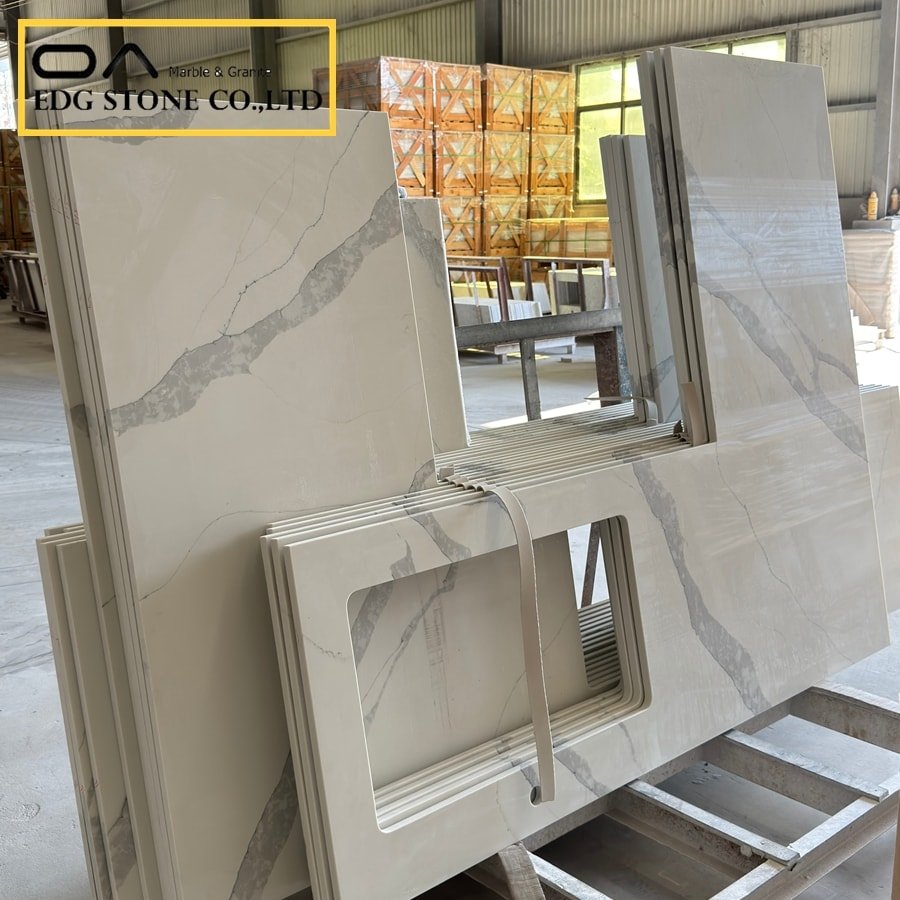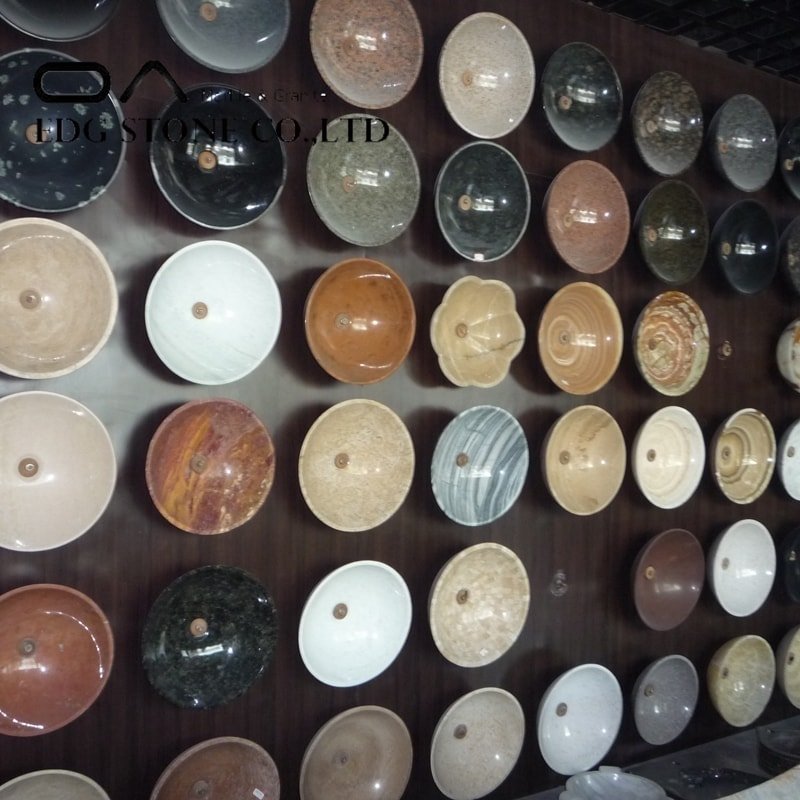Quartz stone is currently the most used architectural decorative stone. Quartz stone is made of 93% quartz crystals, 7% resin, and other binders, and then formed by vacuum, high pressure, and high vibration. It is an artificial stone plate, also known as a synthetic stone. The surface of the quartz stone is smooth, dense, and non-porous, and the color is rich and comparable to natural stone. At the same time, it has the advantages of certain toughness, no volatile gas, no toxicity, no radiation, and no color difference in the large area use.
Quartz stone can be described as the perfect combination of natural beauty and high technology. The plate is die-casted with a pressure of more than 50 tons, the hardness is not less than Mohs hardness level 6, and the density is 2.6g/cm3. The water absorption rate of quartz stone is only 0.02%, and it has the function of resistance to penetration. The plate is cured at a high temperature of 150 degrees, so it has the function of high-temperature resistance. The quartz stone plate can withstand high temperatures up to 300 degrees.
Speaking of the quartz stone plate can withstand high temperatures of 300 degrees, many people will have their own opinions. The relevant documents presented by the quartz stone manufacturers to customers indicate that the quartz stone can withstand 300 degrees of high temperature. However, in use, the plates often explode after contact with high-temperature objects. Due to the high hardness of the quartz stone plate, it is difficult to repair after the explosion, so everyone has certain doubts about the high-temperature resistance of the quartz stone.
How much high temperature can the quartz stone plate withstand? I would still say more than 300 degrees because the whole quartz stone slab is heated to 300 degrees without any change. Many people will ask why contact with a hot pot will cause an explosion in life! Quartz stone is a brittle polymer material with certain thermal expansion and contraction characteristics. When the plate cannot withstand the internal stress caused by thermal expansion and contraction when it is locally heated, it will burst.









